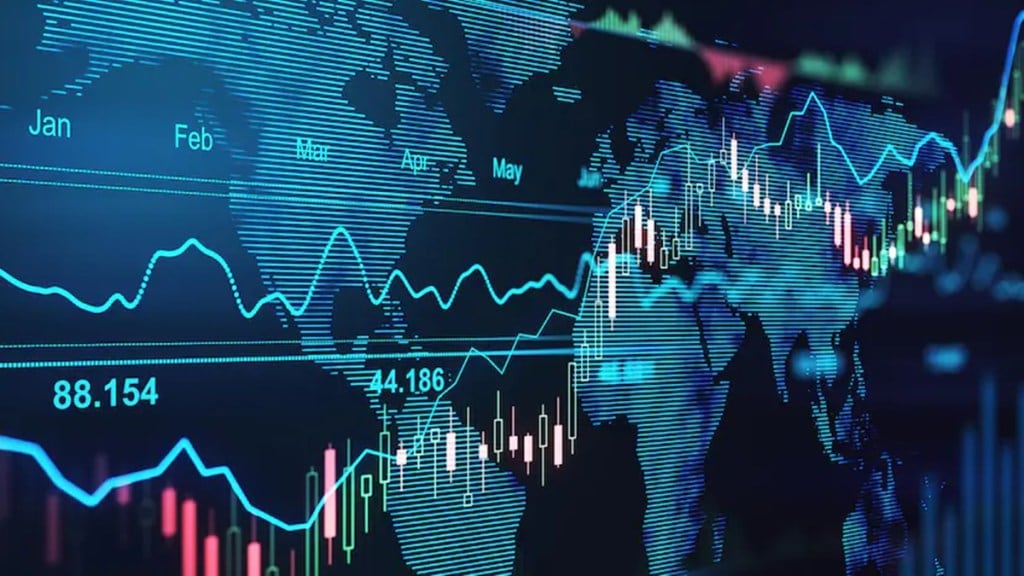Its a party across Asian markets. Japan’s Nikkei 225 surged 7.38%, and the broader Topix gained 7.12%. South Korea’s Kospi rose 5%, while the tech-heavy Kosdaq gained 4.61%. This is after the massive gains seen across Wall Street last evening after US President Donald Trump announced a Tariff pause. Hong Kong’s Hang Seng has also opened with 2% gains but one would keep a close watch on the Chinese markets as Trump announced pause for all but China.
The gains mirror the overnight gains in the US. The broad-based S&P 500 zoomed up nearly 10% to clock its biggest one-day gain since 2008. This is also the third-biggest gain in the post-WWII history for the index. Meanwhile, the Dow Jones closed up nearly 8% to log its biggest percentage advance since March 2020. The tech-heavy Nasdaq Composite surged 12%, its largest one-day jump since January 2001 and second-best day ever.
Trump’s 90-day tariff pause but not for China
In a dramatic shift, Donald Trump announced a 90-day “pause” on reciprocal tariffs for more than 75 countries. However, China was clearly excluded. Calling out Beijing’s alleged unfair practices, Trump said he was raising tariffs on Chinese goods to 125% effective immediately.
“China has shown no respect to the global market,” Trump posted on his Truth Social platform. “The days of ripping off the USA are over.”
Trump explains the pause
Trump clarified that over 75 countries had been in talks with the US on trade and currency issues, and since they had not retaliated, he decided to reduce the reciprocal tariff to 10% for a 90-day window. “This is to give room for fair negotiation,” he said.
China back with 84% tariff
In retaliation to Trump’s steep tariff hike, Beijing announced an 84% tariff on American goods, significantly higher than the earlier 34%. These tariffs will take effect from April 10, as reported by Reuters. Additionally, China added 12 US firms to its export control list, and labeled six American companies as ‘unreliable entities’, further deepening the trade standoff.
Federal Reserve’s dovish signals
In parallel, the US Federal Reserve released its March FOMC meeting minutes, which showed that most policymakers supported slowing the pace of balance sheet drawdown. Although some members disagreed, the consensus was that caution was necessary amid uncertainty over the debt ceiling.
Dollar under pressure
The US Dollar Index (DXY), which tracks the greenback against a basket of six major currencies, fell 0.17% to 102.73 on Thursday. Meanwhile, the Indian rupee appreciated by 0.49%, ending at Rs 86.69 against the dollar on April 9. Currency traders are now eyeing the evolving US-China tariff situation for clues on future dollar movement.
Crude oil
Crude oil prices were relatively steady in early Thursday trade. WTI crude was slightly down by 0.18%, trading at $65.35, while Brent crude slipped 0.67% to $61.99.
Indian Markets shut for Mahavir Jayanti
Both the NSE and BSE are closed today, Thursday, April 10, on account of Mahavir Jayanti, a national public holiday. Normal trading will resume on Friday, April 11.
On Wednesday, April 9, Indian equity indices ended on a weak note after showing signs of a short-lived recovery the previous day. Sensex fell by 379.93 points to close at 73,847.15 and Nifty 50 declined by 136.70 points, ending at 22,399.15.
FII, DII data
Foreign Institutional Investors (FIIs) continued to sell Indian equities. On April 9, they pulled out Rs 4,358 crore, extending their selling streak to eight straight sessions. However, Domestic Institutional Investors (DIIs) continued to act as a support pillar, buying stocks worth Rs 2,976 crore.

